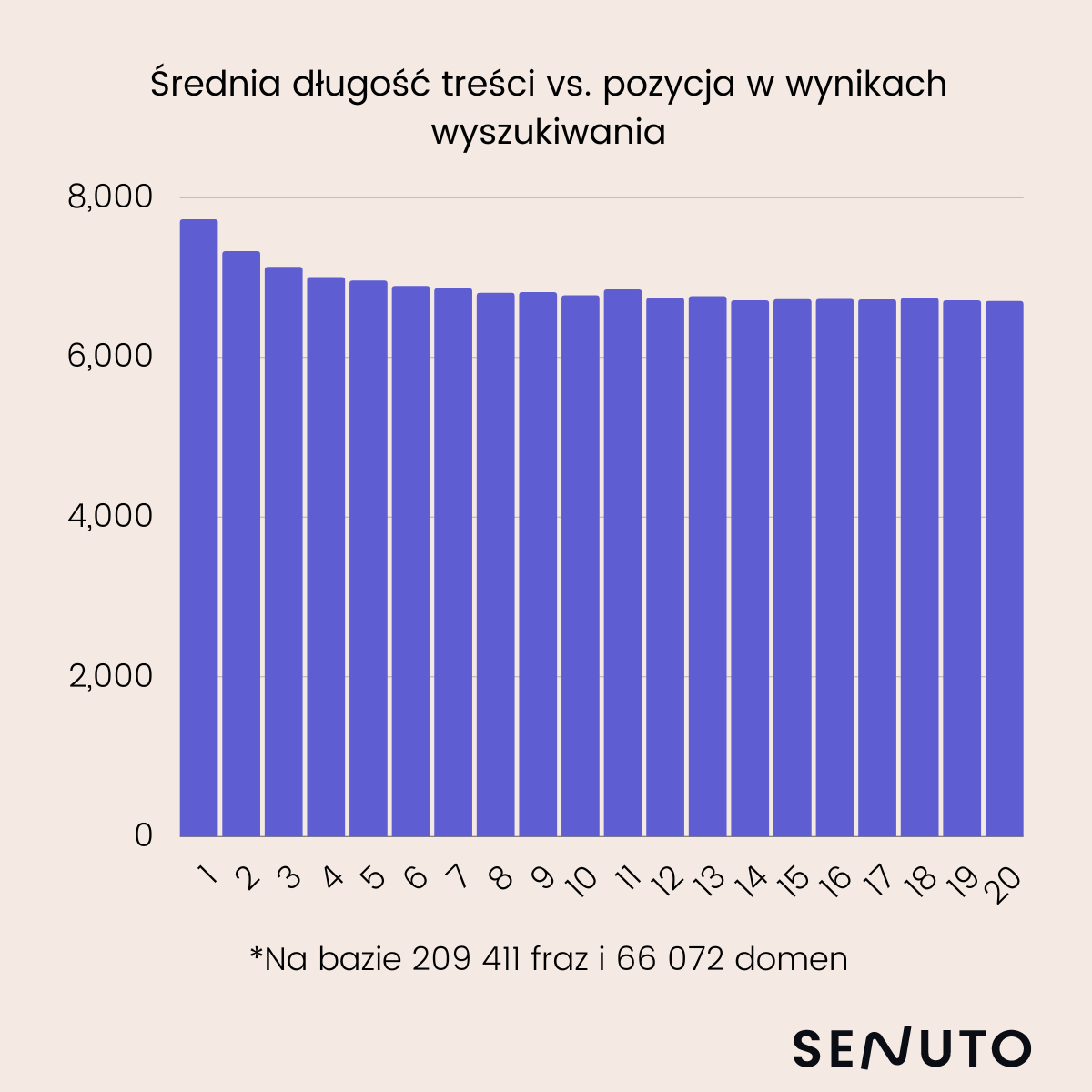Google has begun rolling out an update to its major algorithm, this time called Helpful Content. The SEO community is in an uproar. The changes will be sizable and for many site owners – severe. On the other hand, there is still some time to prepare for these changes.
Google has a habit of preceding algorithm updates with earlier announcements – so that site owners and SEO specialists have time to make at least some of the amendments. This time is no different.
The Helpful Content entry appeared on Google’s blog on August 18, and implementation of the update began the following week. The full implementation will take about two weeks, and you’ll have to wait longer for the effects in Poland. Details below.
What is the Helpful Content update and what changes it will force on content creators
.
Helpful content means helpful content. What Google will take aim at, then, will be primarily not helpful content.
What kind of unhelpful content is that? In a nutshell: those that are written with Google’s algorithm in mind, instead of the reader (also known as a human).
Isn’t that paradoxical? Google intends to beat over the heads of those who write content with, well, Google in mind.
Yes, it seems strange. Until we remember that the Mountain View giant’s top employees have long been saying to publish content that is user-friendly first and foremost.
.
My answer was that BERT doesn’t change the fundamentals of what we’ve long said: write content for users.
You or anyone working with clients have long been able to say this is what we say.
– Danny Sullivan (@dannysullivan) October 28, 2019
If it didn’t resonate enough with previous updates (e.g., BERT in 2019), it needs to resonate now.
What is worth noting regarding the Helpful Content update:
- .
- It will take about two weeks to implement, with English-language sites going first. The change will be added to other languages over time, but no timetable has been provided. Whether and when it will affect content written in Polish is unknown. However, it certainly gives native developers and positioners more time to prepare.
- This is a site-wide update, which means that if it touches a particular domain – the ranking changes will be visible for the entire site, not just for individual subpages that contain faulty content. It is not clear at this point what the ratio of “unhelpful” to “helpful” content on a site must be for it to be penalized.
- Google announces that making up for any losses after meeting their update will be a lengthy process (we’re talking months).
.
In a moment we will discuss tips on how to understand the idea of (un)helpful content and how to prepare for the changes associated with the latest update.
First, though, an important note: with virtually every Google algorithm update, everything only comes out in the wash. Google’s announcements and their guidance are worth taking both seriously and with detachment. Do not panic or indulge in speculation, of which there is no shortage on the web. Only the next weeks and months will show how large the scale of changes we are dealing with and what has really changed in search engine rankings.
How to write user-focused content (human-first content)?
.
There is no one-size-fits-all recipe for how to write good content that satisfies both the user and the search engine algorithms. But Google, as with some past updates, has shared tips and best practices – in the form of questions that every site owner and content creator should answer for themselves.
- Do you have or plan to gather an audience that, if they came to your site, would find the content posted on it helpful?
- Does your content clearly demonstrate first-hand experience and in-depth knowledge of a topic (for example, experience that comes from actually using a product or service, or visiting a place)?
- Does your site have a main purpose, focused around a specific topic?
- After reading your content, will someone walk away feeling that they learned enough about a topic to help them achieve their goal?
- Will someone walk away after reading your content with a sense that they had a rewarding experience?
.
.
.
.
.
Helpful? Maybe a little. But when we add to the set recommendations (in the form of guiding questions) about what content not to create, the picture becomes clearer.
As I mentioned earlier, in the nutshell, the idea is not to write texts with the search engine in mind, because this way, paradoxically, we get content that the search engine doesn’t like.
The following questions directly from Google help you understand what this really means..
- Do you produce a lot of content on a variety of topics, in the hope that some of it will rank well in search results?
.
Explanation: Filling a site with a variety of content that is not tied together by a common theme is a negation of the idea of topical authority. This, in turn, is one of the key concepts in semantic SEO and a must-have when thinking about high rankings in Google.
Rather than trying to grab multiple pigs by the tail, focus on specific, related topic areas and within them provide the user with the best information possible.
.
You’ll find it easier to achieve this with a data-driven content plan, and you’ll generate one using Senuto’s Content Planner module. The tool is designed to help you isolate key topic areas for your site and write content that earns high topical authority.
- Do you use automation to produce content on multiple topics?
.
Explanation: Most likely, this is content generated by artificial intelligence-powered “machines” based on the GPT-3 mechanism. The AI texts gaining popularity will therefore have a hard life. For publishers, this probably means the need to outsource texts to live copywriters – or at least to work solidly on AI texts in such a way as to weed out all artificiality and linguistic awkwardness.
- Do you mostly summarize what others have to say, without adding much of value from yourself?”
.
Explanation: Google will benefit from expert content, backed by the author’s unique knowledge and experience. “Cliches”, created based on rewritten texts from other sites or publicly available information, will drop down in the rankings.
The search engine, by the way, has been using the so-called information gain score – that is, the grade given to a page based on how much new information it contributes.
What emerges from this is simple advice: add real value and new knowledge that your competitors don’t have. Learn more from a webinar on semantic SEO hosted by Damian Salkowski.
.
- Do you write about something just because it seems to be trending, rather than because you would write about it for your current audience?
- Does your content leave readers feeling like they need to keep looking for better information from other sources?
.
.
Explanation: Again, we return to the idea of topical authority. If you present broad, expert knowledge on your site that fully satisfies the user’s intentions – you are home. If you’re using tricks to just draw users to you from Google, but not giving them much real value – you’re in… a place you don’t want to be.
- Do you write texts of a certain length because you’ve heard or read that Google has a certain preferred number of words in content? (Google at this point makes it clear: “no, we don’t.”).
Explanation: The study by Damian Salkowski confirms what Google employees remind us of from time to time: there is no definitive correlation between content length and search engine ranking. Instead of content length, we recommend focusing on satisfying user intent. If it takes 10 thousand characters to do that – fine. If 5 thousand – also fine.
.
.

- Did you decide to enter a niche subject area without any reliable knowledge, mainly because you thought it would bring you traffic from a search engine?
- Does your content promise an answer to a question that in fact has no answer, such as suggesting that there is a release date for a product, movie or TV show, while it is unconfirmed?
.
.
Explanation: Here the “victim “* may fall primarily to media outlets that use clickbait article titles and unnaturally dilate their content, thus making it difficult for the user to get information on a topic of interest (but instead forcing them to stay on the site longer and watch the ads).
*I take this word in quotation marks because the real victims of bad article optimization in the media are primarily their readers.
Does it mean that I have to delete some content from my site?
.
If you partially publish content that is valuable from the user’s point of view, but you also have some such texts on your site, whose main task is to influence Google’s bots – then these are actually worth looking into.
Do you have to delete all the content that might fall under the Helpful Content update?
That would be a rather brutal solution – and not at all necessary. It’s worth leaving such content in the system, but at least temporarily unpublish it (e.g., in WordPress set it as sketch instead of published)..
Temporarily, that is, until you have converted them into more valuable content (fitting in with the idea of “helpful”).
Using Google’s new recommendations, you can supplement the old content with new information or remove the parts that are redundant or even misleading.
For example, article titles may need to be refined, in such a way that they actually relate to the content in the article – instead of just the emotions of the viewer.
If you have been describing some products, relying only on the manufacturer’s description or reviews from Amazon, make sure to provide a more credible message – preferably by gaining your own experience in dealing with the product or asking someone to write their unique opinion for you.
One more argument for not hastily deleting content was cited on LinkedIn by Jakub Sawa. Common sense – in many cases you simply don’t know how the content will be evaluated by Google. Your gut feeling may confuse you. As a result, you’ll delete text that doesn’t hurt your site at all. Unnecessary traffic.
That’s why it’s worth approaching the changes announced by Google carefully, but calmly. Especially since in the initial phase they will affect English-language sites. When the time will come for content written in Polish – for now we do not know.
.
 Wojciech Maroszek
Wojciech Maroszek